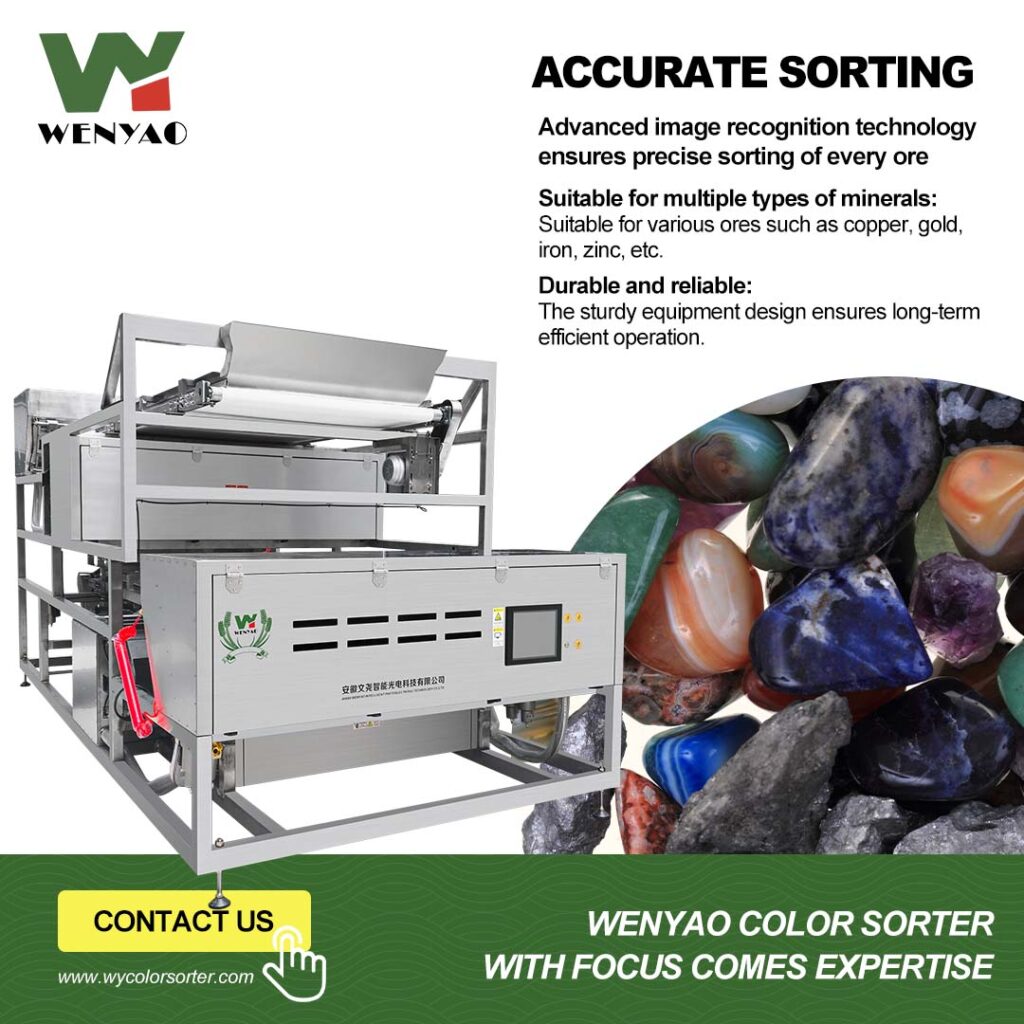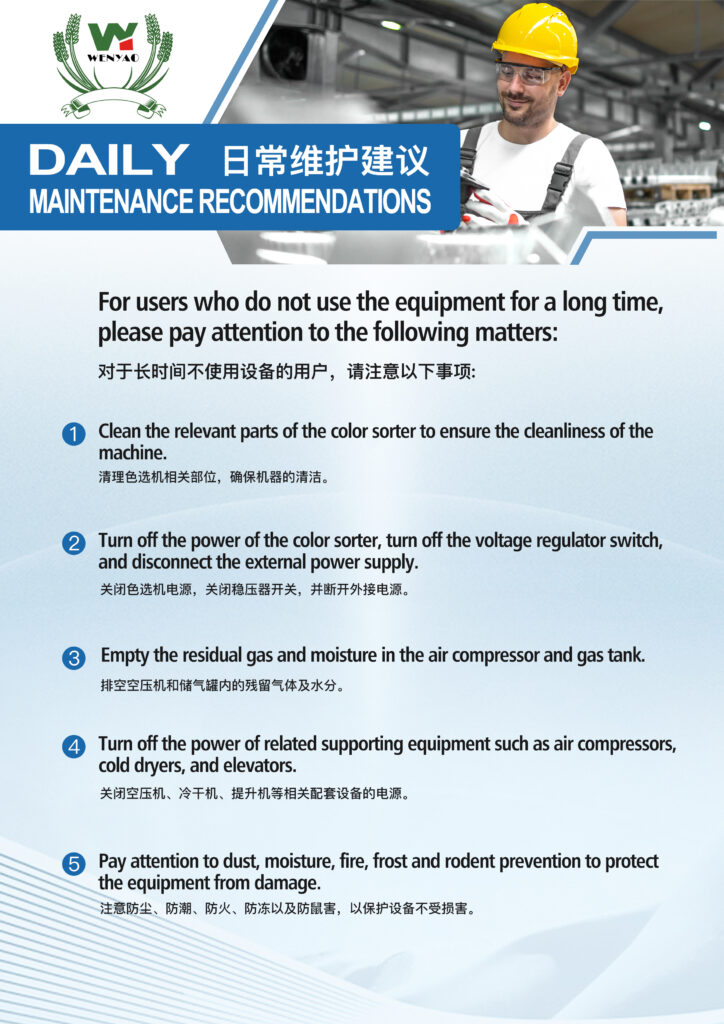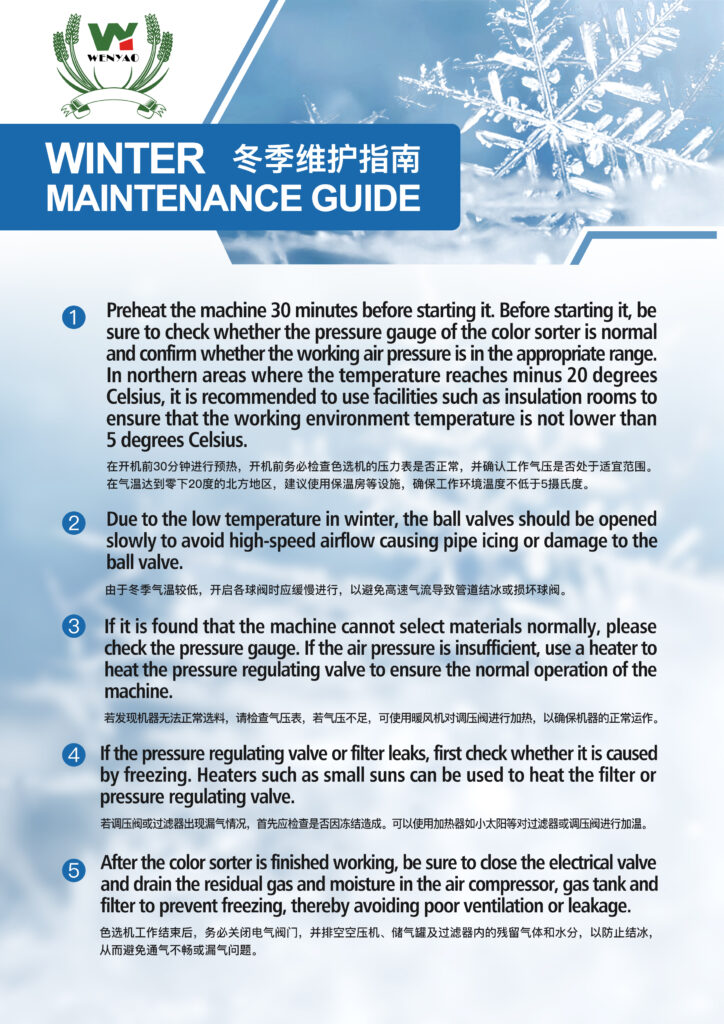Downtime in color sorter operations not only disrupts production schedules but also increases operational costs. While many operators follow standard maintenance routines, there are often overlooked factors that can significantly impact machine performance and lifespan. By combining preventive maintenance strategies with practical, data-backed insights, you can dramatically reduce unplanned stoppages, lower repair costs, and maximize throughput. The following guide offers counterintuitive tips, seasonal maintenance advice, and cost comparisons to help you keep your color sorter running at peak efficiency.
Table of Contents
ToggleCommon Misunderstandings
Oversights in routine care can cause unexpected downtime. For example, common beliefs like “cleaning the lens daily ensures better clarity” may actually cause harm. Over-cleaning can damage the coating. Once-a-month ultra-fine cleaning is sufficient to maintain performance.
Similarly, while many assume that a drier environment is better, maintaining a relative humidity of 55–65% helps prevent static electricity from attracting dust, which can degrade sorting accuracy.
The Importance of Calibration
Operational calibration is key to ensuring consistent sorting quality and output. Machines processing under 5 tons per hour should maintain an amplitude of 2.0–2.5 mm, while those handling 5–10 tons per hour should operate at 3.0–3.8 mm. A real-world example from a Brazil nut factory showed that proper calibration increased processing capacity by 22%, proving that small adjustments can yield significant productivity gains.
| <5 tons/hour | amplitude 2.0-2.5 mm |
| 5-10 tons/hour | amplitude 3.0-3.8 mm |
Daily Maintenance Recommendations
For users who do not use the equipment for a long time, please pay attention to the following matters:
- Clean the relevant parts of the color sorter to ensure the cleanliness of the machine.
- Turn off the power of the color sorter, turn off the voltage regulator switch, and disconnect the external power supply.
- Empty the residual gas and moisture in the air compressor and gas tank.
- Turn off the power of related supporting equipment such as air compressors, cold dryers, and elevators.
- Pay attention to dust, moisture, fire, frost and rodent prevention to protect the equipment from damage.
Winter Maintenance Guide
Cold weather poses specific risks to the performance of color sorters. Therefore, we suggest the following practices for color sorting operation.
- Preheat the machine 30 minutes before starting it. Before starting it, be sure to check whether the pressure gauge of the color sorter is normal and confirm whether the working air pressure is in the appropriate range. In northern areas where the temperature reaches minus 20 degrees Celsius, it is recommended to use facilities such as insulation rooms to ensure that the working environment temperature is not lower than 5 degrees Celsius.
- Due to the low temperature in winter, the ball valves should be opened slowly to avoid high-speed airflow causing pipe icing or damage to the ball valve.
- If it is found that the machine cannot select materials normally, please check the pressure gauge. If the air pressure is insufficient, use a heater to heat the pressure regulating valve to ensure the normal operation of the machine.
- If the pressure regulating valve or filter leaks, first check whether it is caused by freezing. Heaters such as small suns can be used to heat the filter or pressure regulating valve.
- After the color sorter is finished working, be sure to close the electrical valve and drain the residual gas and moisture in the air compressor, gas tank and filter to prevent freezing, thereby avoiding poor ventilation or leakage.
Cost Comparison
Proactive care is far more cost-effective than emergency repairs. Preventive maintenance costs around $8,000 annually and results in only 4 days of downtime, whereas emergency repairs can cost over $41,000 and cause up to 21 days of lost production. The savings in both time and money make preventive maintenance a smart long-term investment.
| Maintenance Type | Annual Cost | Downtime |
|---|---|---|
| Preventive | $8,000 | 4 days |
| Emergency Repair | $41,000 | 21 days |
Conclusion
Reducing color sorter downtime is not just about ticking off a checklist—it’s about making informed adjustments to everyday practices. By understanding common misconceptions, optimizing calibration, preparing for seasonal conditions, and investing in preventive care, you can keep your equipment operating at peak performance. This approach not only lowers repair costs but also maximizes productivity and extends the lifespan of your color sorter.
Keywords
color sorter troubleshooting, vibration feeder adjustment, preventive maintenance

















